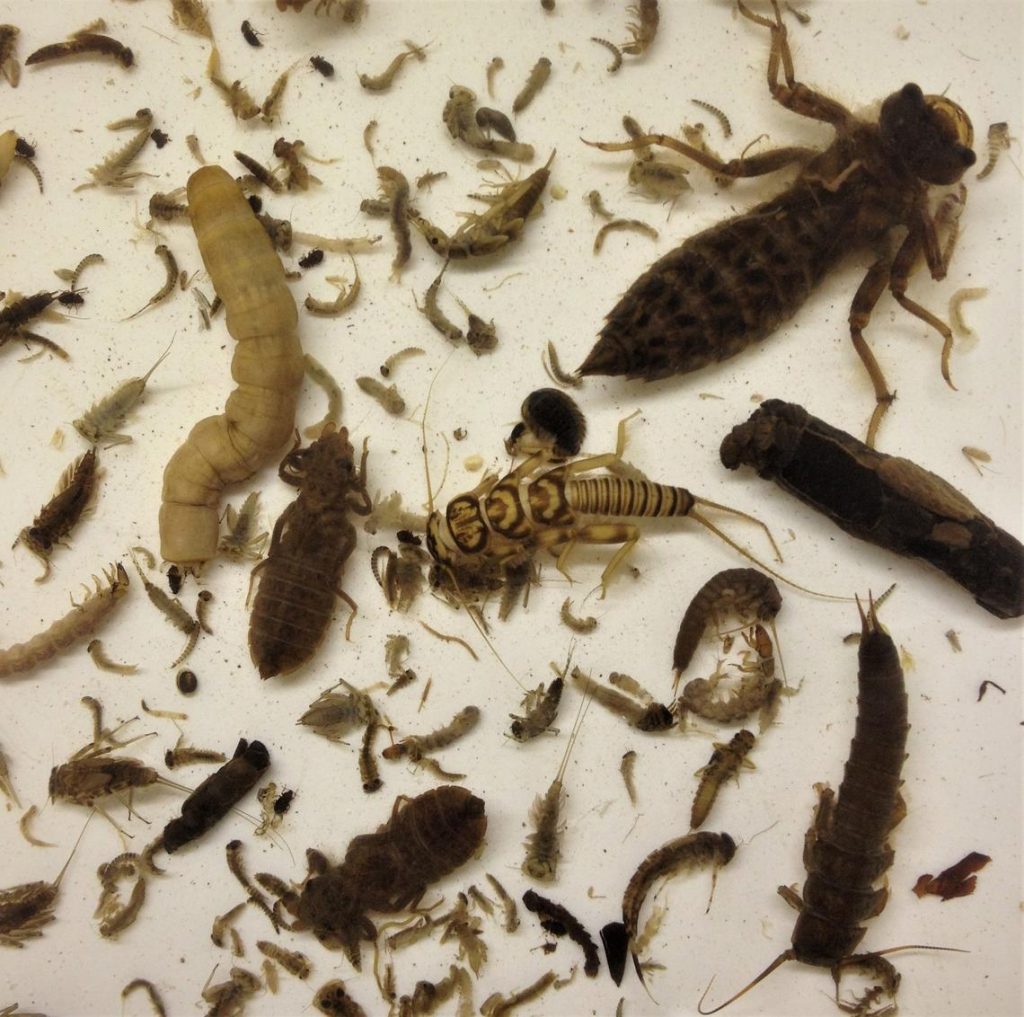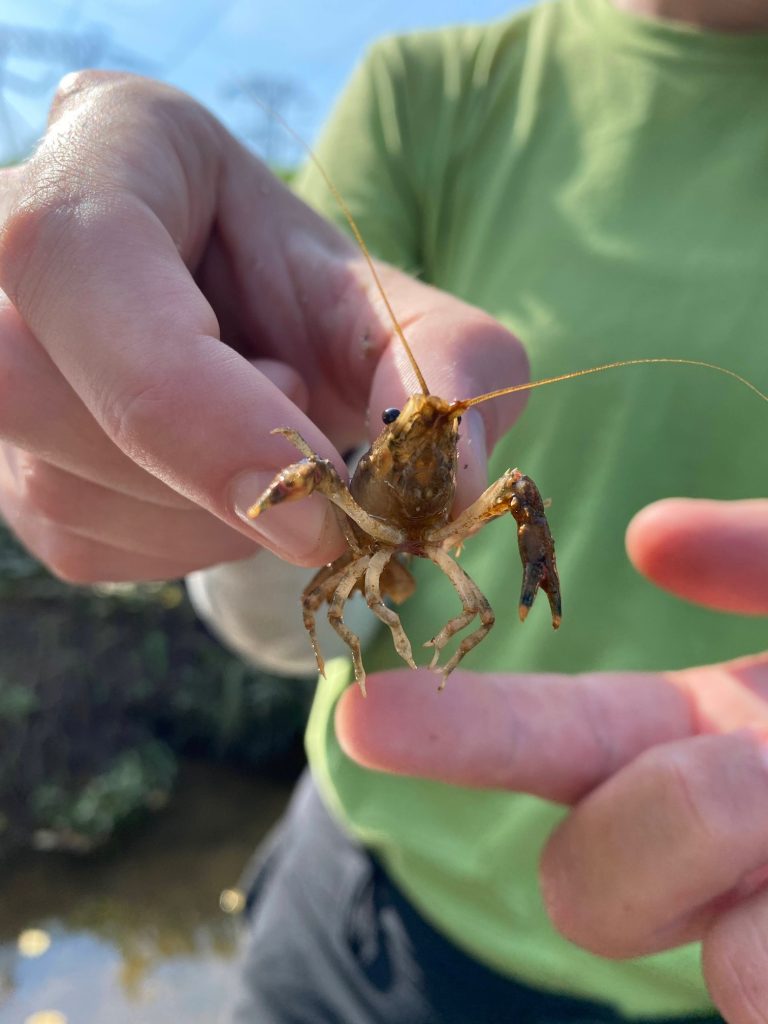
Facebook Twitter Instagram YouTube
Written on: December 8th, 2021 in Wetland Assessments
By Brittney Flaten, DNREC’s Watershed Management and Assessment Section
Before I started at DNREC, I worked in Maryland conducting stream health assessments. When I joined the Wetland Monitoring and Assessment Program (WMAP) I was excited to learn that the team was working on a new stream assessment protocol. Let’s look at what a stream assessment is, and how stream health relates to the work that our team does in Delaware.
What is a stream assessment?
Stream assessments can be used by governments, nonprofits, or citizen scientists to document stream health in their area. Most states have their own protocol – WMAP is currently working on one for Delaware! Local environmental groups like Nanticoke Watershed Alliance and Delaware Nature Society have their own methods that volunteers use to collect data. While each organization may have a different protocol for assessing stream health, there are generally four kinds of data collected.
Water Quality
When WMAP is assessing stream health, we’re interested in measuring characteristics like water temperature, dissolved oxygen, and pH, which impact what kinds of animals can live there. In the field, we use a handheld water quality meter with sensors that can detect temperature, oxygen, and dissolved ions in the water. We also look for signs of water pollution like discoloration, oily sheens, excessive algae, or unusual smells. There are several organizations in Delaware that collect other kinds of water quality information like the concentration of nitrogen, phosphorus, and total suspended solids. If you’re interested in learning more, you can check out the Delaware Water Quality Portal.
Hydrology
To assess hydrology, we look for evidence that the stream’s shape has been altered by humans. Some examples of alterations include culverts, dams, or walls that straighten the stream. We’re also interested in the stream’s ability to connect with the surrounding floodplain, which we can determine by looking at how incised the stream is. Floodplain connection is particularly important during storm events. When water levels rise, the excess water and debris can spill out onto the floodplain, rather than causing damage to inhabited areas or infrastructure downstream.
Habitat
Before looking for organisms, we assess the quality of habitat in the stream. Potential habitats include submerged aquatic vegetation (SAV), logs and other woody debris, piles of leaves, and root wads from trees. All of these provide a place for organisms like fish, crayfish, and insects to hide from predators and find food. We also look for signs of excess sedimentation in the stream, which can stress fish, invertebrates, and aquatic vegetation. Tall, eroded banks, muddy water, and lots of silt or clay covering the bottom of the stream are all signs that there is too much sediment.
Biology
To find living organisms in streams, we sample habitat like logs and root wads using a D-net, which has very small holes that only let water escape. Most of the organisms we find in our nets are benthic macroinvertebrates like freshwater clams and mussels, snails, mayflies, water beetles, and dragonfly larvae. We use keys and guidebooks to help us identify, sort, and count them in the field. Of course, we also look for fish, salamanders, and frogs! Sometimes we’re lucky and find one in our D-net, or we see them but can’t catch them! In the office, we categorize organisms based on how tolerant they are to environmental stressors like pollution or low dissolved oxygen levels. For example, mayflies, stoneflies, and caddisflies are very sensitive to stressors, but worms and fly larvae are not. If we find many sensitive organisms in our sample, it’s likely the stream is in good condition.


Why are we interested in stream health?
Clean streams provide clean drinking water, good habitat for fish and other organisms, and opportunities for recreation. Also, stream health and wetland health are closely related. Riverine wetlands, for example, depend on water supply from streams that are well-connected to the floodplain. On the other hand, wetlands purify water before it enters streams and rivers by trapping substances like sediments, fertilizers, and pesticides. Both wetlands and streams are important in improving the overall health of our watersheds. If you’re interested in learning more, visit the Division of Watershed Stewardship’s website. If you’re looking to get involved in stream health in your community, there are several opportunities with Nanticoke Watershed Alliance, Delaware Nature Society, and University of Delaware Citizen Monitoring Program.